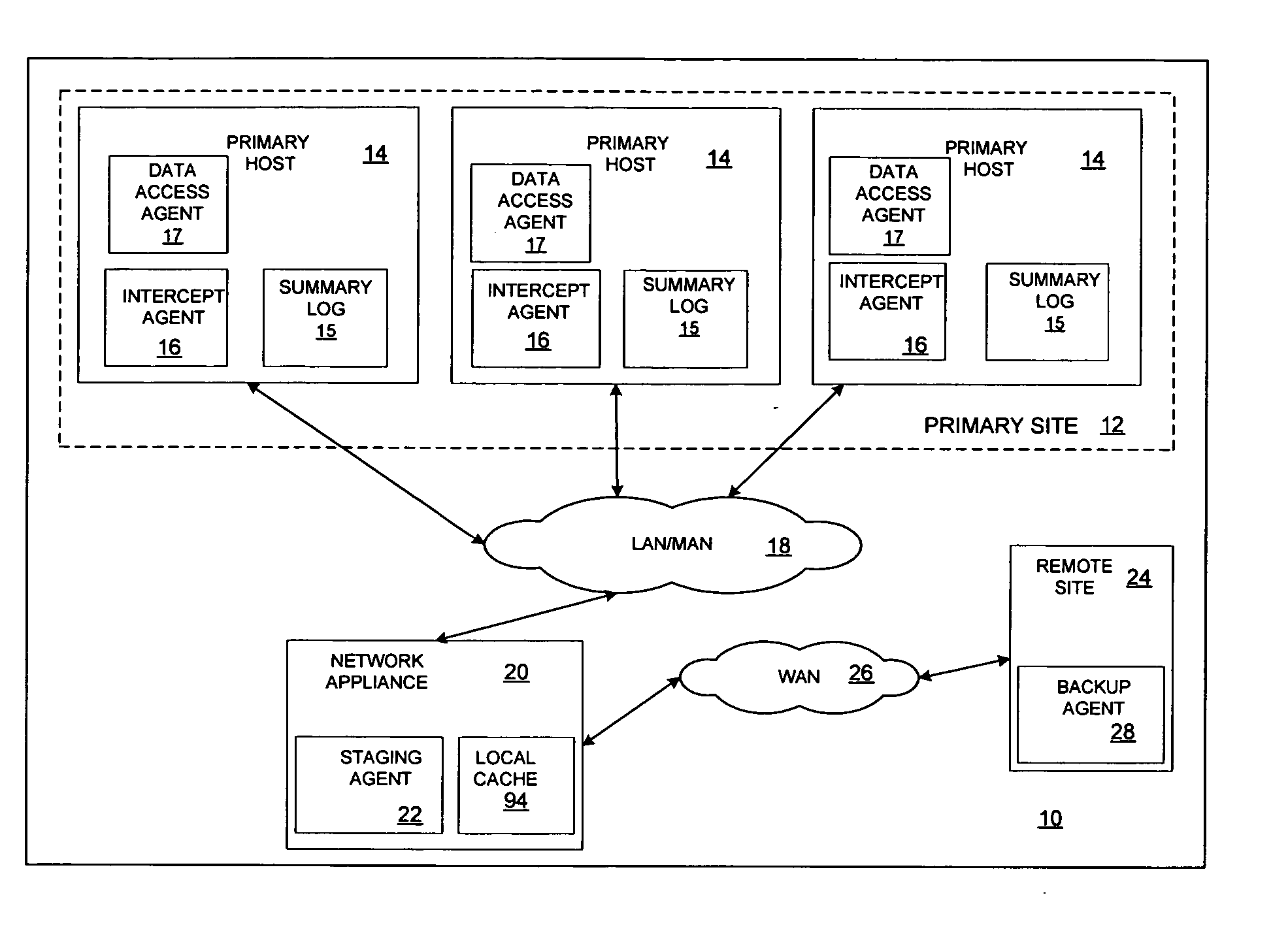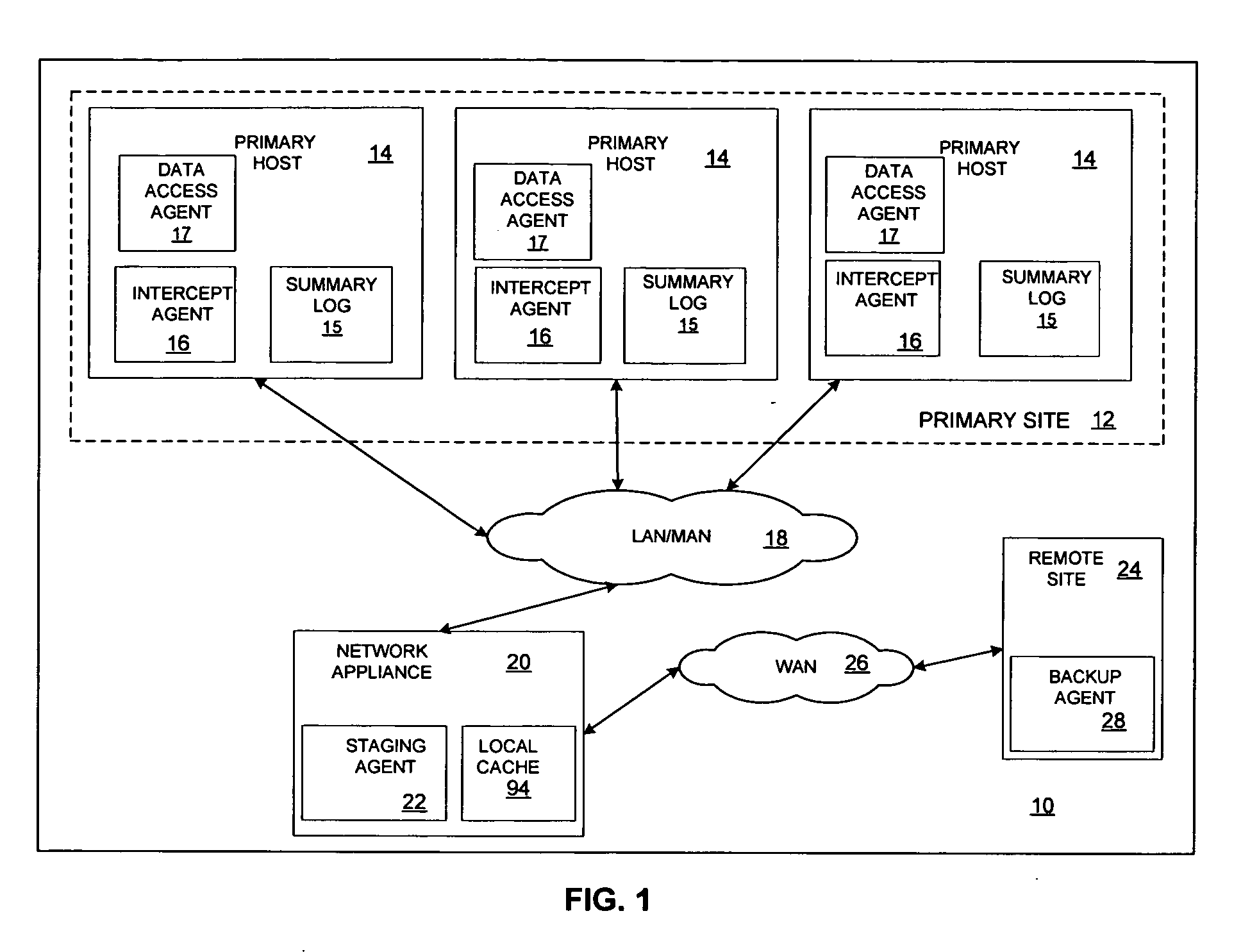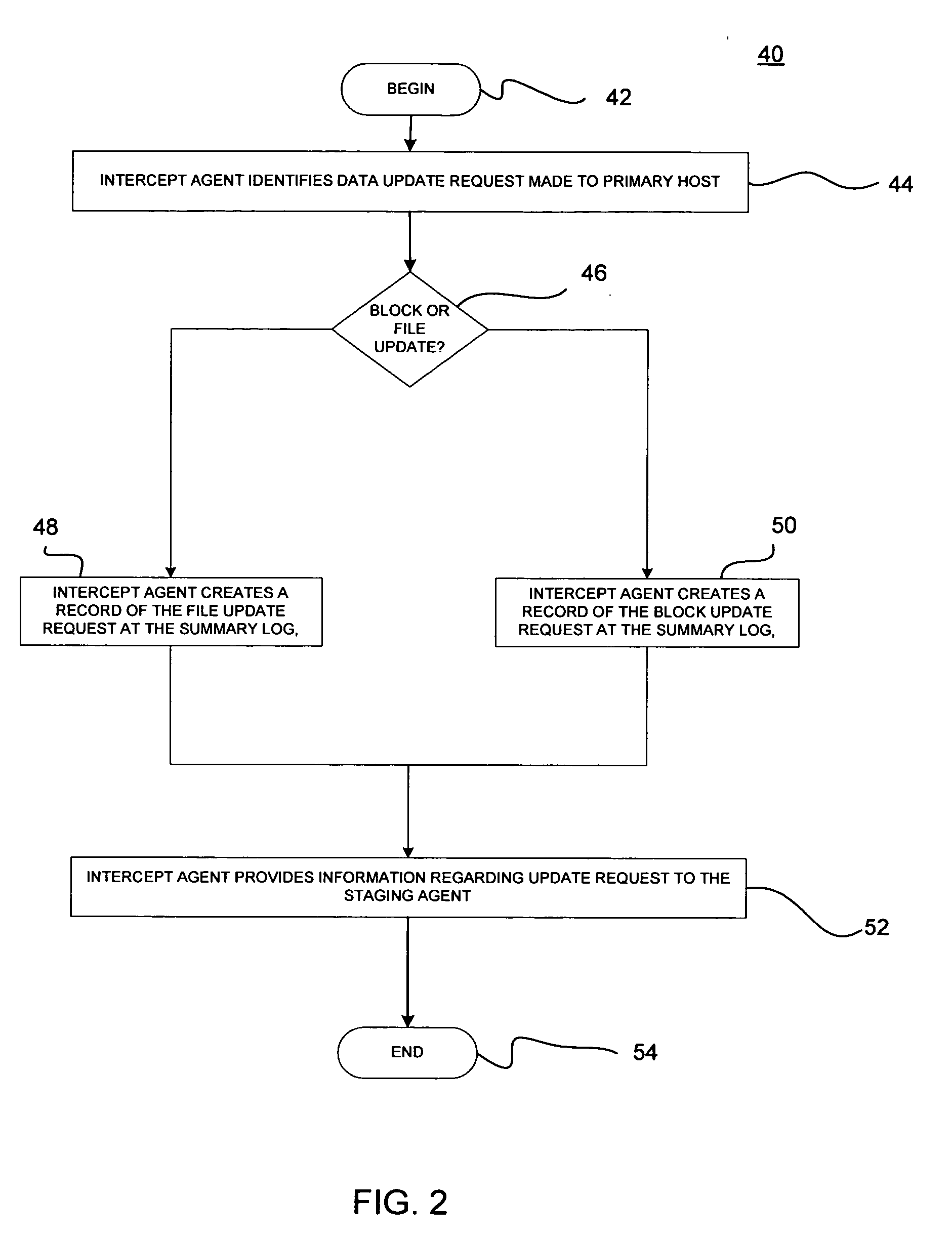Minimizing resynchronization time after backup system failures in an appliance-based business continuance architecture
a backup system and appliance technology, applied in error detection/correction, redundant hardware error correction, instruments, etc., can solve problems such as data loss, data loss, data penalty on applications, etc., and achieve the effect of minimizing resynchronization tim
- Summary
- Abstract
- Description
- Claims
- Application Information
AI Technical Summary
Benefits of technology
Problems solved by technology
Method used
Image
Examples
Embodiment Construction
[0017] The invention will be described primarily as a system and method for minimizing resynchronization time after backup system failures using a summary log, in an appliance-based business continuance architecture. In the following description, for purposes of explanation, numerous specific details are set forth in order to provide a thorough understanding of the present invention. It will be evident, however, to one skilled in the art that the present invention may be practiced without these specific details.
[0018] Those skilled in the art will recognize that an apparatus, such as a data processing system, including a CPU, memory, I / O, program storage, a connecting bus and other appropriate components could be programmed or otherwise designed to facilitate the practice of the invention. Such a system would include appropriate program means for executing the operations of the invention.
[0019] An article of manufacture, such as a pre-recorded disk or other similar computer progra...
PUM
 Login to View More
Login to View More Abstract
Description
Claims
Application Information
 Login to View More
Login to View More - R&D
- Intellectual Property
- Life Sciences
- Materials
- Tech Scout
- Unparalleled Data Quality
- Higher Quality Content
- 60% Fewer Hallucinations
Browse by: Latest US Patents, China's latest patents, Technical Efficacy Thesaurus, Application Domain, Technology Topic, Popular Technical Reports.
© 2025 PatSnap. All rights reserved.Legal|Privacy policy|Modern Slavery Act Transparency Statement|Sitemap|About US| Contact US: help@patsnap.com



